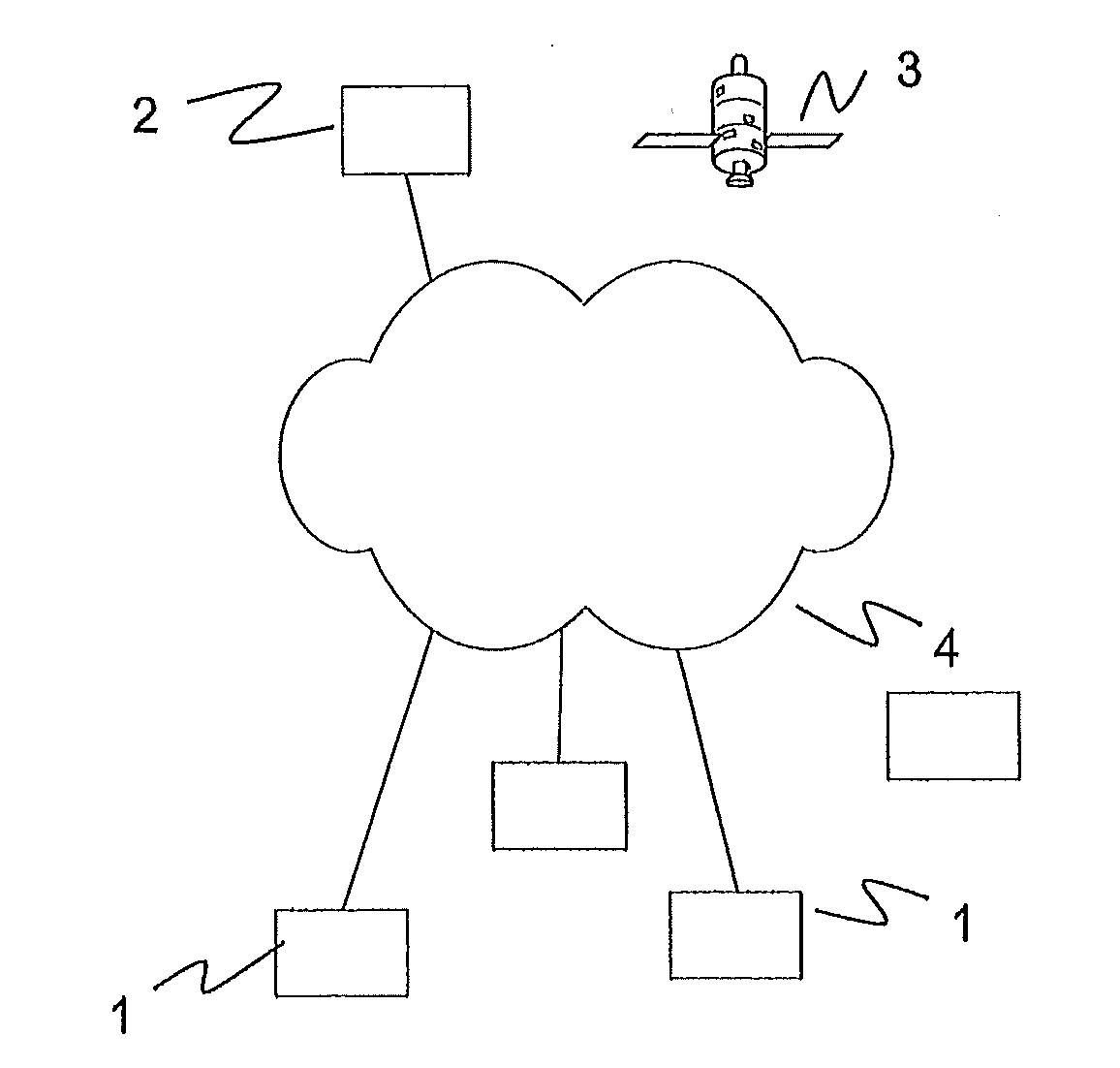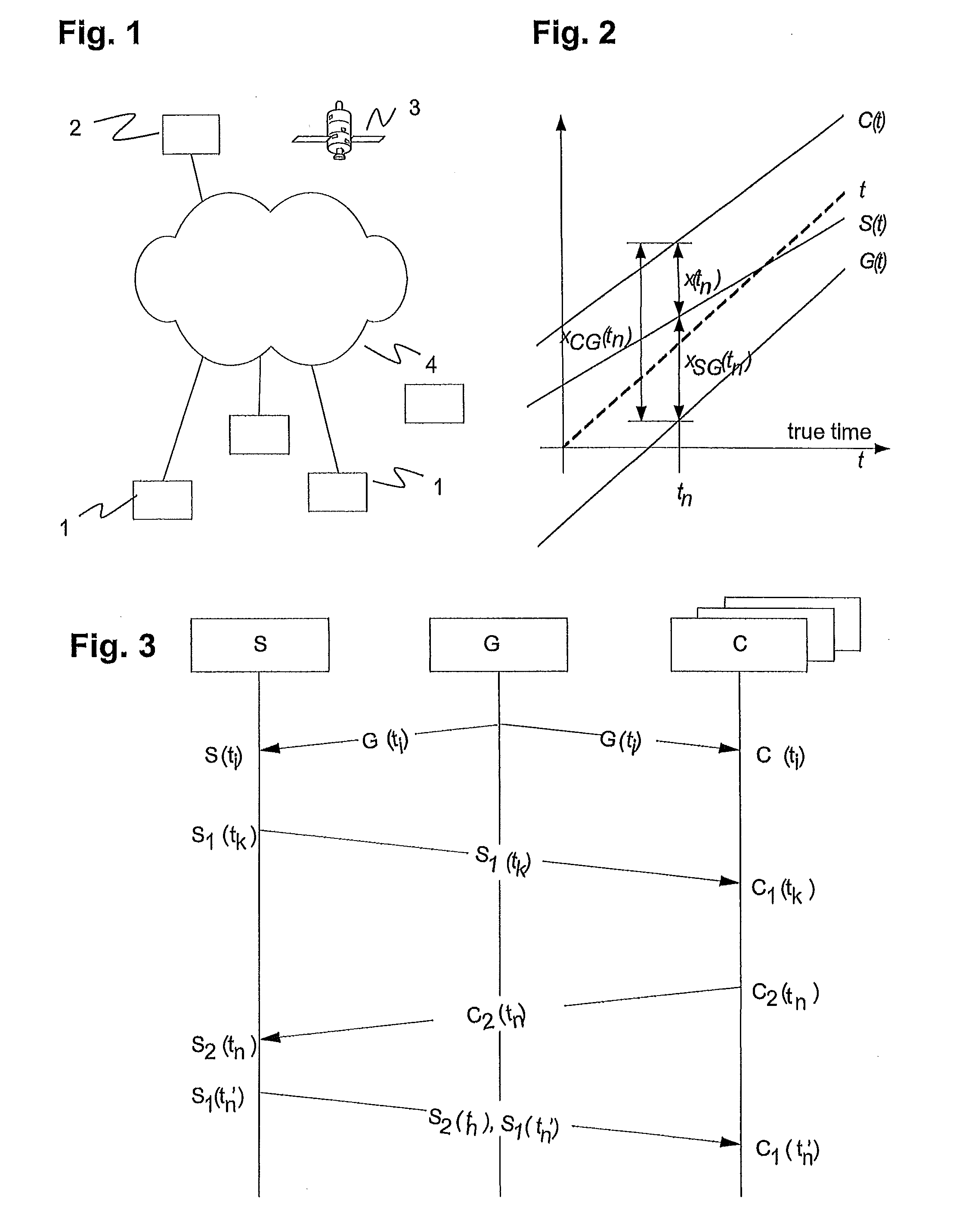Estimating a time offset between stationary clocks
a time offset and stationary clock technology, applied in the field of time synchronization, can solve the problems of preventing or degrading gps reception, and no alternative implementations of time synchronization of stationary clocks are currently availabl
- Summary
- Abstract
- Description
- Claims
- Application Information
AI Technical Summary
Benefits of technology
Problems solved by technology
Method used
Image
Examples
Embodiment Construction
[0012]Exemplary embodiments are directed to time synchronization of two clocks, such as two (or more) stationary clocks.
[0013]According to the exemplary embodiments, a global time signal from a global time reference or time source in common view can be used to calculate a common view based clock offset between two stationary clocks instead of two respective clock offsets between each one of the clocks and the global time reference. In parallel, a network based clock offset between the two clocks can be calculated based on messages exchanged over a communication network interconnecting the two clocks and without reverting to the global time reference. For example, the two most recent values of the common view and network based clock offsets can then be combined or superposed in a seamless or hitless way to produce a final time offset estimate.
[0014]In an exemplary variant of the disclosure, the combination of the independently calculated common view and network based clock offsets is...
PUM
 Login to View More
Login to View More Abstract
Description
Claims
Application Information
 Login to View More
Login to View More - R&D
- Intellectual Property
- Life Sciences
- Materials
- Tech Scout
- Unparalleled Data Quality
- Higher Quality Content
- 60% Fewer Hallucinations
Browse by: Latest US Patents, China's latest patents, Technical Efficacy Thesaurus, Application Domain, Technology Topic, Popular Technical Reports.
© 2025 PatSnap. All rights reserved.Legal|Privacy policy|Modern Slavery Act Transparency Statement|Sitemap|About US| Contact US: help@patsnap.com



